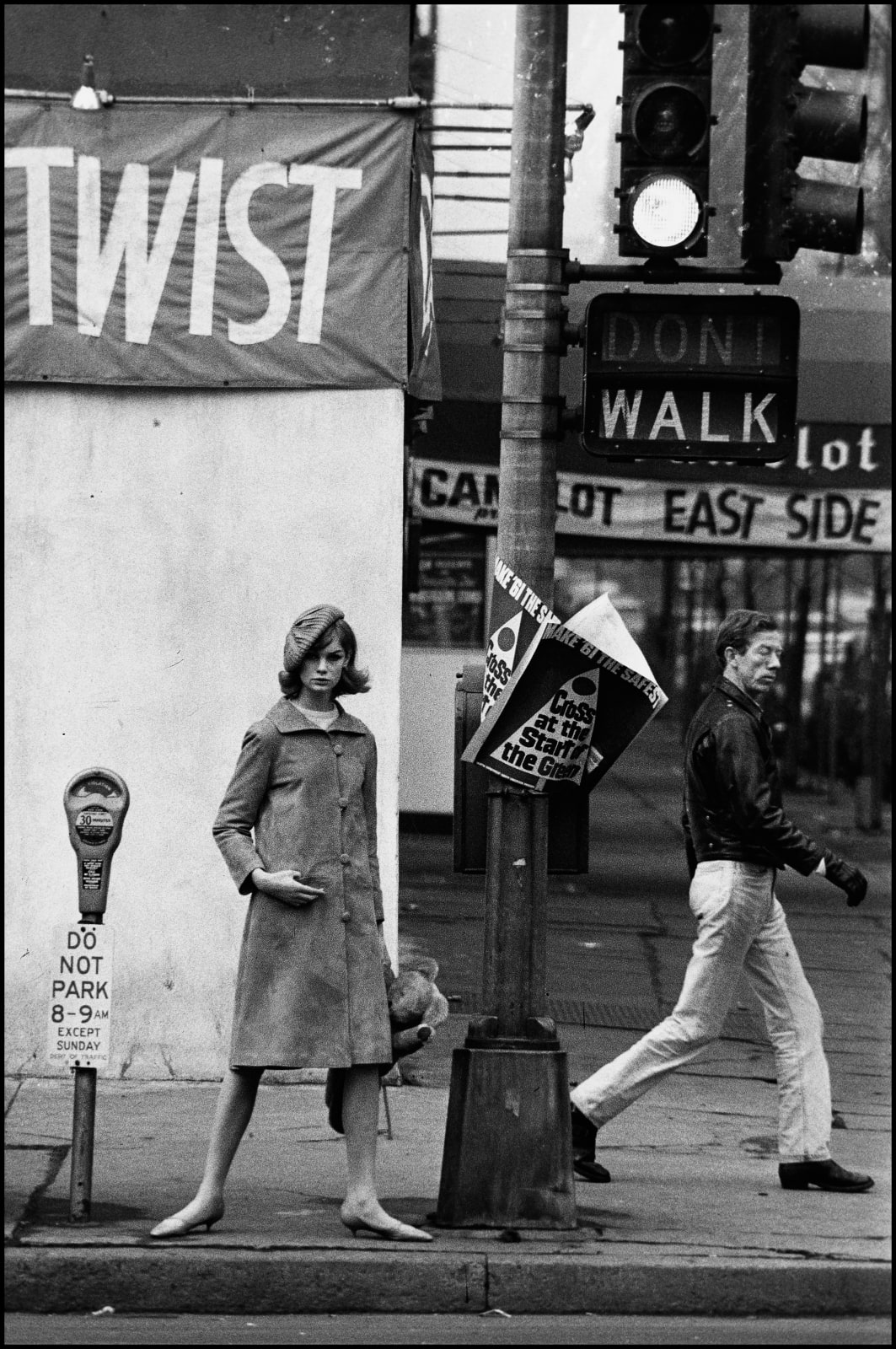David Bailey UK, b. 1938
Jean Shrimpton Twist, 1962-1991
Platinum Palladium
Signed by the artist, on verso
Signed by the artist, on verso
Image: 50 x 33.5 cm
Sheet: 71 x 55.4 cm
Framed: 79.5 x 63.8 cm
Sheet: 71 x 55.4 cm
Framed: 79.5 x 63.8 cm
Edition of 30
© David Bailey
In this striking black-and-white street photograph, David Bailey captures the essence of the 1960s. His muse, Jean Shrimpton, stands poised on a lively city sidewalk, her elegant silhouette contrasting with...
In this striking black-and-white street photograph, David Bailey captures the essence of the 1960s. His muse, Jean Shrimpton, stands poised on a lively city sidewalk, her elegant silhouette contrasting with the gritty street scene. As a male figure strides across her path, the image is infused with narrative tension, showcasing Bailey’s keen ability to capture the decisive moment.
The photograph’s stark contrast and documentary-like quality reflect Bailey’s signature aesthetic: minimalist, direct, and uncompromising. By positioning Shrimpton against the raw cityscape with its “DON’T WALK” signal and “TWIST” banner fragment, Bailey creates a visual commentary on the cultural transitions of the era. The traffic light’s command stands in ironic counterpoint to Shrimpton’s transgressive presence in public space. At the same time, the partially visible “TWIST”, a reference to the popular dance of the time, symbolises the spirit of youth liberation prevalent in the 1960s.
Bailey’s inspiration stemmed from his desire to dismantle the rigid conventions of fashion photography. Rejecting the formality of the 1950s, he took his practice out of the studio and into the streets, capturing them within the authentic pulse of modern life. This approach was revolutionary, liberating fashion imagery from artificial constraints while infusing it with the energy of contemporary existence.
Within Bailey’s oeuvre, this image holds particular significance as exemplary of his groundbreaking work with Shrimpton, which redefined visual culture during the cultural revolution of the Swinging Sixties. The photograph embodies the democratisation of fashion, reflecting the dismantling of class barriers and the rise of youth culture that characterised the period. Bailey’s street photography transformed fashion imagery from a rarefied realm to vibrant reality, establishing London as a global centre of cultural innovation.
This photograph transcends fashion photography to become a documentation of history when British pop culture found its voice. Bailey’s direct, spontaneous, and unadorned vision continues to influence and shape contemporary visual culture, making this work not merely a collectable image but a seminal piece of photographic history.
The photograph’s stark contrast and documentary-like quality reflect Bailey’s signature aesthetic: minimalist, direct, and uncompromising. By positioning Shrimpton against the raw cityscape with its “DON’T WALK” signal and “TWIST” banner fragment, Bailey creates a visual commentary on the cultural transitions of the era. The traffic light’s command stands in ironic counterpoint to Shrimpton’s transgressive presence in public space. At the same time, the partially visible “TWIST”, a reference to the popular dance of the time, symbolises the spirit of youth liberation prevalent in the 1960s.
Bailey’s inspiration stemmed from his desire to dismantle the rigid conventions of fashion photography. Rejecting the formality of the 1950s, he took his practice out of the studio and into the streets, capturing them within the authentic pulse of modern life. This approach was revolutionary, liberating fashion imagery from artificial constraints while infusing it with the energy of contemporary existence.
Within Bailey’s oeuvre, this image holds particular significance as exemplary of his groundbreaking work with Shrimpton, which redefined visual culture during the cultural revolution of the Swinging Sixties. The photograph embodies the democratisation of fashion, reflecting the dismantling of class barriers and the rise of youth culture that characterised the period. Bailey’s street photography transformed fashion imagery from a rarefied realm to vibrant reality, establishing London as a global centre of cultural innovation.
This photograph transcends fashion photography to become a documentation of history when British pop culture found its voice. Bailey’s direct, spontaneous, and unadorned vision continues to influence and shape contemporary visual culture, making this work not merely a collectable image but a seminal piece of photographic history.
